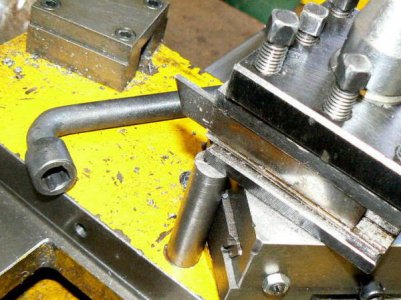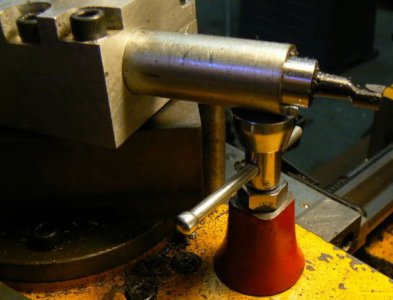- Joined
- Jan 16, 2020
- Messages
- 8
I am not so sure that going to a wider tool is the answer. A wider tool will offer more turning resistance to the work piece, which in turn creates more downward force on the tool, creating more chance for chatter. A narrower tool would offer less resistance, in turn resulting in less downward force and less flex, provided the tool does not stick out too far. 3/32" is narrower than 1/8", not wider.
The other points that have been brought up are all good also, and gib adjustment on the cross slide and the compound are very important. I had mine where I thought they were tight enough, but I had to snug them up just a bit more for parting to go smoothly. Even then I would still have some trouble, which I was able to virtually eliminate by going to the slightly narrower blade. There are times when I need a wider cutoff tool, but most of the time the 3/32" tool works very well.
One last thing to consider is that after sharpening your cutoff blade on a grinder, it might be a good idea to hone it a bit on a stone to give it a very keen edge.
The other points that have been brought up are all good also, and gib adjustment on the cross slide and the compound are very important. I had mine where I thought they were tight enough, but I had to snug them up just a bit more for parting to go smoothly. Even then I would still have some trouble, which I was able to virtually eliminate by going to the slightly narrower blade. There are times when I need a wider cutoff tool, but most of the time the 3/32" tool works very well.
One last thing to consider is that after sharpening your cutoff blade on a grinder, it might be a good idea to hone it a bit on a stone to give it a very keen edge.



